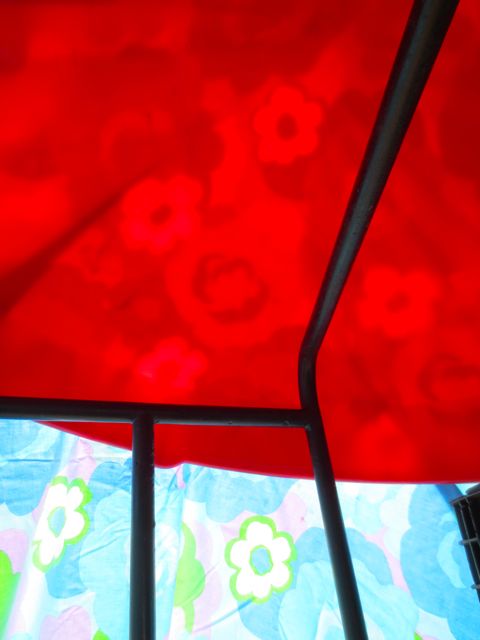How Children Communicate With Each Other Through Symbol
"I don't like this here." And he tore out the cross piece of bamboo. It was holding the whole thing together. The rest of the pieces of bamboo clattered down on top of each other. The gate pieces were now piled up on top of the two branches that double-marked the "You shall not pass."
There was no cry of "Hey you broke my gate," because that meant the gate had communicated its intentions. Tearing it down gave it further meaning. Putting it back into place was no longer even necessary.
That gate was just one of the gates connected to the construction of a jail-trap. The jail-trap compound was established in an unlikely place, but it was near enough to the sandpit to make the sandpit part of the conversation. It bumped up against the blue tubes at the back, so it kind of made sense geographically. An adult would not have chosen this location, yet it made perfect sense to the children and they placed all the symbols in just the right way so that even if others were engaged in different play arcs, they knew -- don't come this way or you will be TRAPPED.
Children communicate with each other, not just in words and action, but in symbol, carefully choosing materials and shaping and reshaping their environment, to signal to others, to share meaning. Further, these symbol and mark making efforts are so clear and meaningful, one child to another, that it is absurd to imagine that play's intrinsic educational value is even argued about out there.
The children had rolled outside earlier that day and two of the Tracks were intent on making a jail -- or a trap, depending on when you asked them. They had been working on different configurations of jail-traps for several days. One of the builders had a very specific materials list on this day and she had already communicated it to one of the co-opers. The piece that she could not find was a sheet for the roof. This was essential. As I went into the basement of the school to get our bin of Fafu and fabrics (they had just gotten washed), her and a friend got busy collecting other items and instructing the co-oper on how they wanted to lift the red top, to place it just so on the metal triangle. Once the roof and the sheets were in place, the builder called me over to look at how the Sun lit up the sheet's print making a flowery glow through the red top. This discovery changed the message being sent through her construction. The jail became cozy rather than utilitarian. They collected melting snow water from the boat in case the "trapped" people got thirsty and set out plates of woodchips in case they got hungry. In other words, it became a house.
At the beginning of the jail-trap construction, the pair had attracted the attention of one of the other Tracks. He was assigned the role of Guard. He didn't really see a need for signaling coziness beyond the possibility of using that coziness as part of the trap..."Look, don't you want to live here? Look how cozy. Now you're trapped!" And once built and outfitted, the builders were done with the jail-trap and moved on because it had become a house to them, but the guard began to add more story in the way of symbol and mark-making.
The gate in the gate was especially satisfying because the guard was able to communicate the best of the best stop signals around in the way of a giant "X." X marks the spot, X marks danger, X says you cannot come through and if you do, you are trapped. On the other side of the sandpit, an adult would probably not even notice the white bar across the entry or would simply walk around the X-gate. It is open on every side after all. An adult would see only the openness having moved on to reading bigger signs or disregarding clear signals since they grew up, but children still read the signs -- "Don't go this way. No way out. And no way in. Obviously."
A few days later, after reading the book, The Terrible Nung Gwama by Ed Young, in our Leaves class, the children began painting "poison" on the Teahouse when they were playing outside. This is not what they were initially going to do, they were going to clean the mud off the Teahouse walls that the Tracks children were using to "clean" it the day before. Inspired by the book, one in which the main character must strategically place deterrents, including manure, poisonous snakes, and biting fish, around her house to scare off the Nung Gwama, the children switched from cleaning to spreading poison all over the place.
We see muddy water, they clearly see poison. Any Nung Gwama would see it and turn right away, scurrying back into the bamboo forest. The mud dried in place and I told the Tracks children later that it was poison, they nodded, of course it is, obviously poison. They could read the signs.




